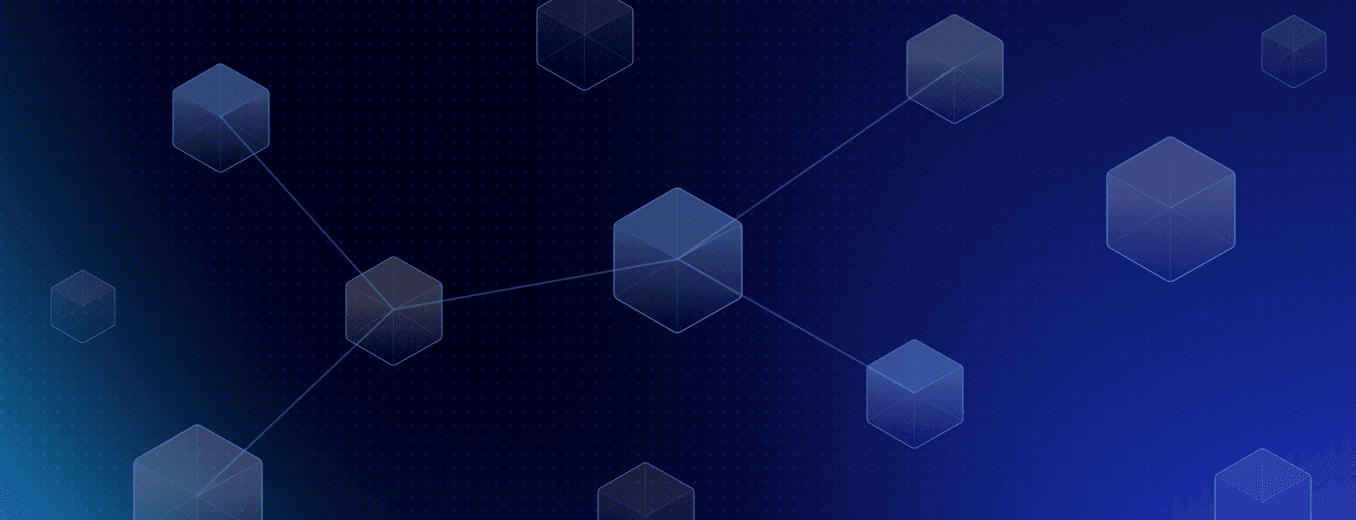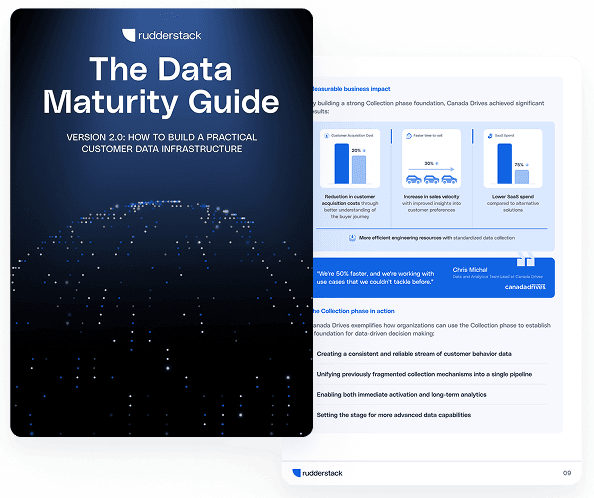Data maturity Phase 2: Centralizing your customer data

After establishing a strong foundation with unified data collection, many organizations find themselves hitting a new kind of wall. Events are flowing consistently, but valuable customer information remains trapped in downstream tools. Marketing teams can see email engagement data in their ESP, but not purchase history. Product teams have rich behavioral analytics, but no visibility into support interactions. Sales teams work with CRM data that's completely disconnected from actual product usage.
The result? Reports require painful manual exports, teams don't trust each other's metrics, and activating rich customer insights across tools remains nearly impossible.
If this sounds familiar, you're ready for the next phase in the data maturity journey: Centralization.
If you haven't already, be sure to check out the previous posts in this series: Your practical roadmap to data maturity and Data maturity phase 1: Collection.
The limits of collection-only infrastructure
With clean event collection in place, your teams can finally trust their behavioral analytics. But new challenges emerge as your organization grows and stakeholders begin asking more sophisticated questions:
Marketing teams want to move beyond basic attribution to explore complex metrics like customer acquisition cost by channel, lifetime value by cohort, and multi-touch attribution that spans weeks or months.
Product teams need to analyze customer segments and behavioral patterns that require combining usage data with account information, support history, and subscription details.
Executive leadership expects comprehensive reporting that unifies financial data, customer health metrics, and operational KPIs into coherent business insights.
These advanced questions require data that your unified collection layer alone cannot provide—CRM records, payment transactions, support tickets, subscription details, and other business-critical information that lives in various SaaS tools throughout your organization.
This is the natural evolution point where you move from solving data consistency problems to solving data completeness problems.
Why Centralization matters
The Centralization phase addresses two fundamental challenges that emerge as organizations mature:
Incomplete customer context: Valuable information created in downstream tools—like lead scores in your CRM, support case resolution in Zendesk, or payment details in Stripe—remains trapped in those systems, making it impossible to create truly comprehensive customer views.
Activation barriers: Even when teams have insights, they struggle to act on them because enriched data and sophisticated segments can't easily reach the operational tools where work actually happens.
At this stage, you're no longer just collecting events—you're ready to combine all your customer data into a single source of truth. That means unifying event data with CRM records, payment transactions, support interactions, subscription details, and any other customer-relevant information inside your warehouse or data cloud..
The Centralization phase transforms your data infrastructure from informational to operational, enabling teams to not just understand what happened, but to immediately act on those insights across every customer touchpoint.
Signs you're ready for Centralization
You know it's time to centralize when your organization experiences these common friction points:
Data reconciliation overhead:
- Teams spend 5-10 hours weekly reconciling conflicting numbers from different systems
- Every meeting starts with debates about whose metrics are correct
- Monthly reporting requires manual data compilation from multiple sources
Analytics limitations:
- Complex questions require stitching together spreadsheets from multiple systems
- Teams constantly export data from SaaS tools like HubSpot, Zendesk, or Stripe just to answer basic cross-functional questions
- Self-service analytics is impossible because relevant data is scattered across tools
Activation challenges:
- Marketing teams want to create sophisticated segments but can't access the customer data they need
- Sales teams work with incomplete customer profiles because behavioral data is trapped in analytics tools
- Support teams can't see customer journey context when resolving issues
Scalability constraints:
- Adding new data sources requires custom integration work for each destination
- Data governance becomes increasingly difficult to maintain across point-to-point connections
- Compliance reporting requires manual aggregation across multiple systems
The key indicator: When teams frequently say "I know this data exists somewhere, but I can't access it," you've outgrown collection-only infrastructure and need comprehensive centralization.
The business impact of fragmented data
Consider the real costs of operating without centralized customer data:
InfluxData's team was spending 10 minutes at the start of every meeting debating whose numbers were accurate instead of focusing on strategic decisions. Their analysts couldn't deploy proper ETL processes, and engineers were building custom integrations instead of working on product features.
Marketing teams across industries struggle to calculate true customer acquisition costs when behavioral data, attribution data, and revenue data live in separate systems. This leads to misallocated budgets and missed optimization opportunities.
Product teams make feature decisions based on incomplete user journey data when they can't connect usage patterns with support interactions, account details, and subscription history.
These aren't just operational inefficiencies—they represent strategic blind spots that compound over time and create competitive disadvantages in markets where customer experience is a key differentiator.
What Centralization looks like in practice
In the Centralization phase, your goal is to create a comprehensive data architecture that unifies all customer information:
1. Establish your cloud data warehouse
- Deploy a modern cloud warehouse like Snowflake, BigQuery, or Redshift
- Configure appropriate data access controls and governance frameworks
- Set up consistent naming conventions and schema standards
2. Implement comprehensive ETL pipelines
- Connect all your SaaS tools (CRM, support, marketing, finance) to your warehouse
- Establish appropriate sync schedules based on data freshness requirements
- Build transformation logic to normalize and clean data from different sources
3. Create unified customer data models
- Join event data with business system data to create complete customer profiles
- Develop business-relevant metrics and KPIs that work across teams
- Implement identity resolution to connect customers across all touchpoints
4. Enable reverse ETL for activation
- Set up pipelines to sync enriched customer data back to operational tools
- Create processes for audience and segment management across channels
- Establish monitoring to ensure data freshness and reliability
This architecture eliminates data silos, creates alignment around consistent metrics, and enables sophisticated customer experiences that leverage your complete data foundation rather than fragmented snapshots.
Customer spotlight: InfluxData
InfluxData's transformation illustrates how the Centralization phase can revolutionize organizational operations and unlock new capabilities.
The challenge: InfluxData faced the classic symptoms of fragmented data infrastructure. Customer information was siloed across PostgreSQL databases, SaaS applications, and analytics tools, creating significant business friction:
- Teams wasted 5-10 hours weekly reconciling conflicting data across systems
- Meetings routinely started with debates about whose numbers were correct
- Engineers spent valuable time building and maintaining custom integrations
- Analysts couldn't deploy proper ETL processes for downstream applications
"We were wasting 10 minutes at the start of every meeting debating whose numbers tracked instead of talking about things that mattered," explains Mona Sami, Director of Data Analytics. "We needed consistent metrics, guardrails around data definitions, and better data hygiene."
The Centralization solution: InfluxData implemented a modern data stack combining RudderStack's customer data platform with Snowflake as their central warehouse:
- Unified data routing from PostgreSQL to Snowflake using custom connectors
- Bidirectional data flows between all systems through a centralized architecture
- Comprehensive data governance with proper version control and access management
- Self-service analytics enabling the analytics team to manage ETL processes independently
Measurable business impact:
- Eliminated 5-10 hours of weekly data reconciliation across teams
- Evolved from basic ETL to sophisticated event tracking and customer journey analysis
- Freed engineering resources to focus on product development rather than data integration
- Enabled advanced use cases including A/B testing and user experience optimization
- Reduced infrastructure costs by replacing custom integration work with standardized solutions
The transformation effect: InfluxData's implementation demonstrates how Centralization creates a foundation for continuous innovation. What started as a solution to basic data reconciliation problems evolved into sophisticated analytics capabilities that were previously impossible with their fragmented infrastructure.
Implementation strategy: Building your centralized foundation
Successfully implementing the Centralization phase requires careful planning and execution across multiple technical and organizational dimensions:
1. Data warehouse selection and setup
- Choose a cloud warehouse that aligns with your technical requirements and team capabilities
- Configure appropriate compute and storage resources for your data volume
- Implement security controls, access management, and compliance frameworks
- Establish backup and disaster recovery procedures
2. Comprehensive data source integration
- Inventory all systems containing customer-relevant data across your organization
- Prioritize data sources based on business impact and data quality
- Implement ETL pipelines with appropriate error handling and monitoring
- Create documentation for data lineage and transformation logic
3. Data modeling and unification
- Design customer data models that reflect your business operations and customer lifecycle
- Implement identity resolution to connect customer records across all sources
- Create standardized metrics and KPIs that work consistently across teams
- Build data quality monitoring and validation processes
4. Reverse ETL and activation workflows
- Identify operational tools that need enriched customer data for maximum effectiveness
- Implement reverse ETL pipelines to sync segments and profiles back to business tools
- Create processes for marketing teams to build and deploy custom audiences
- Establish monitoring and alerting for data freshness and delivery
5. Governance and team enablement
- Create clear ownership and accountability for data quality and governance
- Build training programs to help business teams leverage self-service analytics
- Establish change management processes for schema updates and new data sources
- Implement regular review cycles for data usage and optimization opportunities
Throughout implementation, focus on delivering incremental value while building toward comprehensive capabilities. The most successful Centralization implementations start with high-impact use cases and gradually expand to cover the full customer data ecosystem.
What you unlock with Centralization
When properly implemented, the Centralization phase delivers transformative capabilities that reshape how your organization operates:
Single source of truth: Every team works from the same comprehensive, up-to-date customer data, eliminating debates about data accuracy and enabling confident decision-making.
360-degree customer views: Complete visibility into customer journeys, combining behavioral data, transaction history, support interactions, and account details into coherent profiles.
Self-service analytics: Business teams gain the ability to answer complex questions independently, reducing bottlenecks and accelerating insights-to-action cycles.
Advanced segmentation and activation: Marketing and product teams can create sophisticated customer segments based on any combination of data points and immediately activate them across all channels.
Compliance and governance at scale: Centralized data management enables consistent privacy controls, audit trails, and regulatory compliance across your entire customer data ecosystem.
Foundation for advanced capabilities: The infrastructure established in this phase becomes the launching point for machine learning, predictive analytics, and real-time personalization initiatives.
This is the turning point where customer data transforms from informational to operational—where insights immediately translate into action across every customer touchpoint.
📘 Ready to assess your centralization needs and plan your implementation? Download the full Data Maturity Guide from the left side of this page, or book a demo to learn more.
Signs you're ready for the next phase
You'll know your Centralization implementation is successful when:
- Teams stop debating data accuracy and start focusing on strategic implications
- Business users can answer complex cross-functional questions independently
- Customer segments can be created and activated across channels in hours, not days
- New data sources integrate seamlessly into existing workflows
- Compliance and governance become proactive capabilities rather than reactive challenges
As your centralized data foundation matures, you'll naturally begin encountering new opportunities and limitations. Teams will start asking predictive questions: "Which customers are likely to churn?" "What products should we recommend?" "How can we personalize experiences based on likely behaviors?"
When your organization shifts from understanding "what happened" to anticipating "what will happen next," you'll be ready for Phase 3: Machine Learning—where your comprehensive customer data becomes the foundation for predictive insights and proactive customer experiences.
What's next
In our next post, we'll explore Phase 3: Machine Learning and discuss how to leverage your centralized customer data to build predictive models, anticipate customer behaviors, and create proactive experiences. We'll cover when predictive capabilities deliver meaningful ROI, implementation strategies that work with existing infrastructure, and how companies like Wyze transformed their customer experiences through ML-powered personalization.
Published:
August 20, 2025

Event streaming: What it is, how it works, and why you should use it
Event streaming allows businesses to efficiently collect and process large amounts of data in real time. It is a technique that captures and processes data as it is generated, enabling businesses to analyze data in real time

RudderStack: The essential customer data infrastructure
Learn how RudderStack's customer data infrastructure helps teams collect, govern, transform, and deliver real-time customer data across their stack—without the complexity of legacy CDPs.

Scaling data products starts with fixing the foundation: Five lessons we’ve learned
Most teams don’t have a modeling problem—they have a foundation problem. This post shows how to standardize your pipeline, put one owner in charge, and use observability to scale data products.






